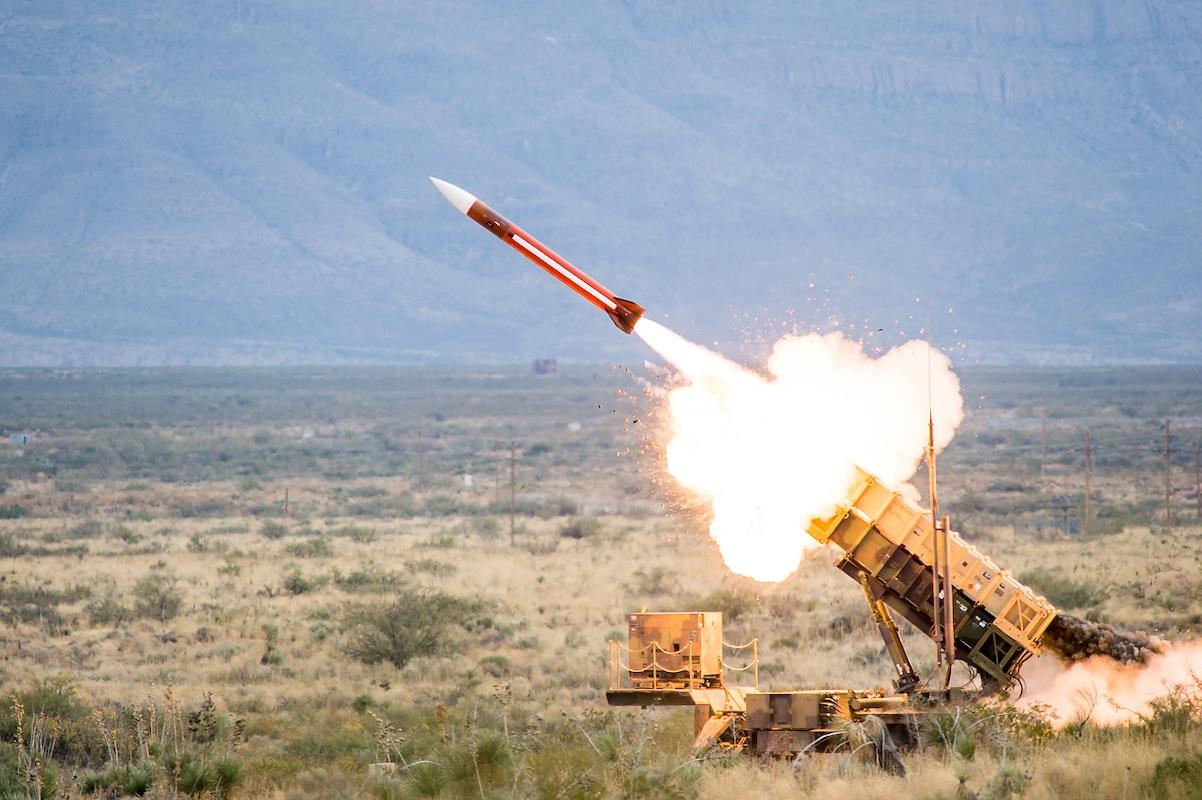
Europe Makes Missiles For Patriots As Israel Retires Them
The GEM-T, or guidance-enhanced tactical missiles, are part of the Patriot PAC-2 air defense system. This missile can intercept aircraft, drones, helicopters and some tactical missiles. It may be able to hit glide bombs like the ones being used by the Russians in Ukraine.
GEM-T uses a blast fragmentation warhead and the plus version features an improved fuse to more effectively engage threats.
GEM-T has a range of 70 km (43.5 miles) and can make intercepts at a height up to 24 km (15 miles).
In the recent Iranian attack against Israel, Israeli Patriot batteries are credited with nine shootdowns. Israel has not specified what was intercepted.
Israel got its original Patriot batteries in 1991. The systems, called Yahalom in Hebrew, are operated by Israel's 138th Battalion. The systems have been modified over the years.
Since 2022 European countries have been ordering GEM-2 interceptors, initially from Raytheon (now called RTX). Recently an existing joint venture called COMLOG, half owned by RTX and the other half by MBDA, is investing in starting a new production line for GEM-T interceptors, mainly in Germany.

Trump sticks to his guns on Korea troop withdrawal

Yen's plunge raises specter of new Asia currency crisis
The initial customers will be Romania, Netherlands, Spain and Germany. The four customers will purchase up to 1,000 missiles from this source and additional missiles from the United States. RTX currently produces around 20 missiles per month and is ramping up to 30 per month by 2027. Even with COMLOG, it will take years to fulfill the missile orders.
There are at least four other European customers for GEM-2, including Italy, and many foreign customers including Korea, Japan, Saudi Arabia and the UAE.
Patriot systems can be roughly divided into two types, PAC-2 and PAC-3, although some PAC-2 Patriot systems have been upgraded so they can fire PAC 3 interceptors.
In 2011 Israel announced it was upgrading its PAC-2 launche s to support PAC-3 interceptors. It is not clear if these upgrades took place, as Israel's home-built air defense systems were given priority.
Israel also invested heavily, partnered with RTX, in the development of the Tamir interceptor for Israel's Iron Dome system and Stunner for David's Sling, which is a maneuverable two-stage hit-to-kill interceptor.
Later Israel and RTX developed SkyCeptor, a variant of the hit-to-kill Stunner that can be used by Patriot batteries and will probably be the interceptor missile for PAC-4. According to the Pentagon, SkyCeptor is far less expensive than the MSE interceptor used by PAC-3.
David's Sling Launch
Israel has locally developed a highly integrated air defense network which includes Iron Dome, David's Sling, Arrow 2 and Arrow 3. It is unlikely that Israel integrated its Patriots into its overall network. One deployment of Patriot, to Eilat in Israel's south, was sent there to deal with Houthi-launched cruise missiles. That deployment suggests that Patriot was outside of the integrated air defense network.
Israel says that the PAC-2 system was hard to maintain and very expensive compared with local alternatives. While not directly criticizing either PAC-2 or GEM-T, some Israelis suggested that the system was not very effective against various missile threats.
Some have suggested that Israel supply its Patriot batteries to Ukraine. While that is unlikely, if the GEM-T interceptors are in good shape they could be sold to foreign customers. (All sales would require US approval.) Such sales could free up new-production GEM-T missiles for delivery to Ukraine.
Israel plans to decommission its Patriot batteries by the end of June, meaning that these missiles could easily find homes elsewhere in the near term. Israel also could supply its GEM-T missiles to“local” customers including Saudi Arabia and the UAE.
Another possibility would be to transfer Israeli Patriot batteries to Jordan to bolster Jordan's air defenses. Jordan supported Israel by shooting down a number of drone headed for Israeli territory during Iran's attack on Israel on April 13th.

Sign up for one of our free newsletters
- The Daily ReportStart your day right with Asia Times' top stories
- AT Weekly ReportA weekly roundup of Asia Times' most-read stories
It would be surprising to find that Israel has not already lined up customers for its Patriot batteries and GEM-T interceptors.
Israel's networked air defense system has features that PAC-2 lacks including more sophisticated command and control, more advanced radars, far better onboard sensors on Stunner and other missiles and ability to locate where threats originate.
Even so, PAC-2 with GEM-T remains a capable interceptor, although the system does not fit well into Israel's evolved air defense complex. In Europe, where air defenses are not yet integrated and where interceptor stocks are low, the retired Israeli systems can still play a useful role. Europe has a long way to go before it has adequate air defense capabilities.
Thus it is unlikely Israel's Patriots will head to the scrap heap.
Stephen Bryen served as staff director of the Near East Subcommittee of the Senate Foreign Relations Committee
and as a deputy undersecretary of defense for policy.
This article was first published on his Weapons and Strategy Substack and is republished with permission.
Thank you for registering!
An account was already registered with this email. Please check your inbox for an authentication link.

Legal Disclaimer:
MENAFN provides the
information “as is” without warranty of any kind. We do not accept
any responsibility or liability for the accuracy, content, images,
videos, licenses, completeness, legality, or reliability of the information
contained in this article. If you have any complaints or copyright
issues related to this article, kindly contact the provider above.























Comments
No comment